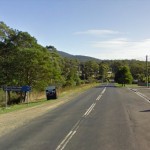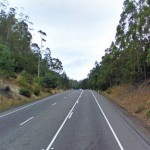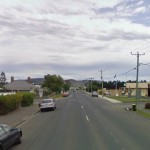Route: Port Arthur to Hobart
Distance: 109km
Climbing: 1,750m
Just like the other (read “real”) Grand Tours, the Tour of Australia finishes with a largely ceremonial final stage that gives the overall leader the chance to soak it all in before being crowned the victor, and the sprinters a chance at a final stage victory. In this year’s edition of the race, that final stage starts in the town of Port Arthur and takes the riders a little over 100km into Hobart where the stage and Tour comes to a close.
From Port Arthur the riders head north on Arthurs Highway, reaching the first of two categorised climbs after just under 20km. The climb is 2.9km at 6.6% average gradient with the fourth category ascent topping out after 21.7km of racing.
From the top of that climb it’s straight into a descent before continuing on the Arthur Highway through Dunalley and Copping, where the race heads west. From there, after 46km, it’s a little more than 20km to the day’s only intermediate sprint, which is contested in Sorell.
The riders then head northwest on Brinktop Road, hitting the second and final categorised climb of the day a short time later. That fourth category climb is just 2km long at an average grade of 5.3%.
After descending off the other side of that climb — the final climb of the 2014 Tour of Australia — the riders head through Richmond, before swinging south towards Hobart. The race joins the Tasman Highway after 97km and crosses the River Derwent after 105km, with the finish line fast approaching.
The riders follow the Tasman Highway right into the heart of Hobart, turning on to Davey Street (as they did on stage 20) before turning left on to the famous Salamanca Place for the final sprint.
There’s every chance that all the classifications in the Tour of Australia will be wrapped up before the final stage begins. If the KOM and sprint classifications are very close though, riders might head out in search of points on the KOMs and the intermediate sprint.
For the general classification riders, the hard work is more or less done by the time the final stage is underway. The final standings are almost certainly decided, the winner is likely to be sipping on champagne, and for those who just missed out it’s a chance to think back on what they could do differently the next time.
Expect the pace to heat up in the bunch after the second and final climb of the day (after 78km), if not before, as the teams of the sprinters try to get their fastmen perfectly positioned for a final stage win. It would be interesting to see how many of the sprinters actually made it through the race. We normally see sprinters drop out of Grand Tours after the early, flatter stages, but with sprint stages scattered throughout the 2014 Tour of Australia, there might be incentive for the sprinters to stick around.
A final word
And so the 2014 Tour of Australia comes to a close. It’s been a huge few months for David Blom and myself, putting together the route, fine-tuning the details, and arriving at something that, we believe, showcases just how great a Grand Tour would be in Australia.
Of course there are any number of options out there about where such a race could go, and we have plenty of ideas for future editions. But in the meantime, thanks so much for reading. I reckon between David and I we’ve put in close to 100 hours of work to get this “race” together, and it’s been exhausting. But it’s also been a lot of fun, particularly when there’s been discussion and engagement in the comments.
So, thanks for reading, let us know what you thought of the Tour overall in the comments, and we’ll be back with regular content next week.
Previous stages
- Tour of Australia 2014: an introduction
- Stage 1: Gold Coast TTT
- Stage 2: Currumbin to Cape Byron
- Stage 3: Nimbin to Grafton
- Stage 4: Grafton to Inverell
- Stage 5: Tamworth to Siding Springs
- Stage 6: Dubbo to Mt. Panorama (Bathurst)
- Stage 7: Bathurst to Cootamundra
- Stage 8: Cootamundra to Tumbarumba
- Stage 9: Tumbarumba to Thredbo
- Stage 10: Khancoban to Mt. Beauty
- Stage 11: Mitta Mitta to Mt. Hotham
- Stage 12: Bright to Wangaratta
- Stage 13: Wangaratta to Mt. Buller
- Stage 14: Mansfield to Mt. Donna Buang
- Stage 15: Warburton to Arthurs Seat
- Stage 16: Mordialloc to Southbank (Melbourne)
- Stage 17: Devonport to Launceston
- Stage 18: Launceston to Bicheno
- Stage 19: Fingal to Ben Lomond
- Stage 20: Longford to Mt. Wellington



















Thanks Matt and Dave; I’ve loved following this year’s tour, I think you have done a really good job with it.
One thing I think would just finish it off nicely would be to do a tour summary, showing the details (start, finish, length, elevation, type) of all the stages in a single table. It would make it easier to come back and look at particular stages later.
Is the lack of a ITT a bit usual for a Grand Tour?
Stage 16.
There are many highlights over the short journey from Port Arthur to Hobart.
There is the Port Arthur Historical site, and the nearby Tasmanian Devil Park.
Doo Town (where every house bar one (Medhurst) has a name plate that includes the word Doo: Af-2-Doo, Da Doo Ron Ron, Didgeri-Doo, etc).
Eaglehawk Neck, the Tessellated Pavement, Blowhole, Tasman Arch, the Devils Kitchen.
Richmond has the oldest bridge in Australia still in use, the old Richond Gaol and the model of Old Hobart Town.
Finally in Hobart, the finish along Salamanca Place passes the Tasmanian parliament house and the Museum and Art Gallery.
*********************************************************************
Once again I would like to thank Matt for bringing this thought bubble to life. Coming up with the route does take a fair bit of to and fro and taking the time to discover what exactly is out there and what would give an interesting race, narrative and realistic feel to it.
This year, the first thought that I had was to take the race to Tasmania and have the GC race culminate with the Mt Wellington Climb and then we decided to work backwards from there. You will notice that most of the big mountain stages would take place on weekends and thus give maximum exposure to the epic at those times. The start location was about the maximum distance away that could realistically be achieved without an major transfers and we liked the look of the Gold Coast for a TTT, we had other potential start locations earmarked, and we might use them in future editions. A scouring of the nation has indicated that we have about 75 climbs that could be ascribed to cat 1 or above within Australia, picking multiple climbs that can be strung together back to back is a fair bit more limited in this country as we don’t have so many mountain very high mountain passes, this does limit to some extent where the tour has to go.
As for my favourite stages or parts of stages, I was very happy with the finishes at Cape Byron, Siding Springs, the Lap of Mt Panorama, Ben Lomand and Mt Wellington. I would love to do the new Omeo Hwy climb at some stage very soon. However, my favourite stage was the Snowy Mountains epic (stage 9). The roads here are perhaps at this point in time not as famous or as popular as the Victorian Alps, but I am sure that could all change with a bit of decent publicity and a similar exercise to the 7 peaks that Victoria has.
I hope that in the future, we can bring more epic ride locations to you and hopefully encourage people to get out, explore and ride their bike. I have heard many stories of people riding a stage or 2 or part thereof of last years tour and I hope to hear more similar tales of exploration and adventure. Enjoy your ride.
David.
Great stuff Dave. Thanks again! 🙂